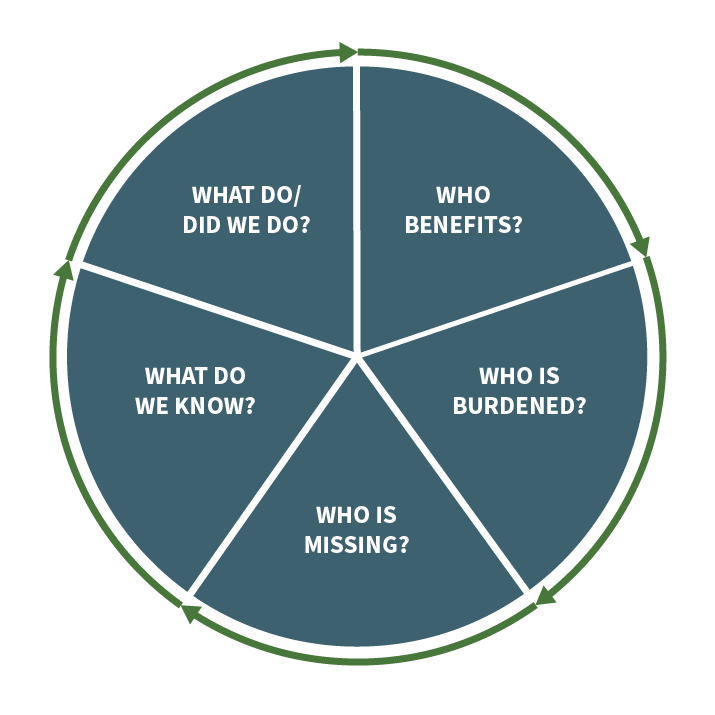Prioritizing Safety to Protect Our Most Vulnerable
Closing the Gap to Create Safe Travel for All
As more jurisdictions adopt Vision Zero plans to eliminate severe and fatal crashes on their roadways, it’s begging the questions: Are some in the community more vulnerable than others? Are some facing disproportionate risks when they travel?
To truly achieve Vision Zero goals, communities need to prioritize the safety and needs of everyone, especially those who are most unprotected. People of color, low-income households, people with disabilities, older adults and young children, people with limited English proficiency, and households with limited vehicle access often face more challenges and barriers to safe transportation. Identifying and learning more about the disparities within communities can help close the gap and allow all residents to travel more safely.
Arlington County, VA, is one such agency who is focused on maintaining an equitable transportation network as one of six core goals in their Vision Zero Program. They collaborated with us to conduct a transportation safety equity assessment report, aiming to understand equity concerns related to transportation safety. By identifying Equity Emphasis Areas, we examined how traffic crashes disproportionately affect neighborhoods with lower incomes or higher populations of Black, Indigenous, and people of color (BIPOC). These findings build upon our original systemic safety analysis, which revealed a clear connection between areas with high numbers of severe crashes and racially diverse, or lower-income communities.
The assessment’s key findings are related to the four areas below.

Systemic Safety
Systemic safety patterns of where crashes occurred and where crashes might be likely to occur.
FINDING – The top ten crash patterns in Equity Emphasis Areas more often involve pedestrians, left turn conflicts, and specific land uses like schools.

Crash Origin
Crashes occur disproportionately in ZIP Code 22204, and crashes occur twice as often in Equity Emphasis Areas.
FINDING – Home ZIP Codes of people involved in Arlington County crashes.

Community Reporting
Community requests are underrepresented in Equity Areas.
FINDING – Safety-related requests submitted to the County by community members.

Hospital Data
People who identify as Black or African American are overrepresented in vehicle crash hospitalizations.
FINDING – Socioeconomic characteristics and travel mode for hospital patients involved in serious or fatal crashes.
We conducted extensive analysis and literature review in partnership with Toole Design Group. Our analysis confirmed that challenges to residents in Equity Emphasis Areas could include: living in neighborhoods with more dangerous roads that have high-speed traffic and less infrastructure for biking and walking, living in densely populated areas with more pedestrians, owning older vehicles with fewer safety features, and having less free time to report safety concerns within the civic process. Additionally, these communities may have infrastructure that is old, poorly maintained, or inadequate because of a lack of investment.
Based on the findings, our team developed a series of equity-focused action items. The action items create steps for Arlington County to proactively address infrastructure needs with an equity lens, create a platform to prioritize safety projects in underserved neighborhoods, and ensure that reporting channels were clear and accessible to all community members.
Our internal interdisciplinary project team analyzed extensive data, researched root causes, and developed preliminary recommendations for this equity analysis, but we got stuck trying to summarize and communicate what we learned. The Fehr & Peers/Toole team jumped in to conduct a thorough quality check of the analysis, conducted a literature review that provided the much-needed context and validation for our findings, honed the recommendations, and produced a beautiful and easy to understand report. We’re thrilled to have this document that has already served to elevate equity in engineering, education, and engagement efforts across our Division of Transportation. Huge thank you to the consultant team for making our goals a reality!
Christine Sherman Baker, AICP
Vision Zero Program Manager, Arlington County, VA
The equity analysis and the action items align with the County’s Equity Resolution and commitment. Adopted in 2019, the Equity Resolution outlined five questions to assess a program’s equitable impact. Using the equity analysis questions as a lens, equity can be integrated to help prioritize safety projects so that all community members can gain equal access to safe infrastructure.
Ultimately, the equity action items have been designed to be executed in addition to the action items set forth in the Vision Zero Action Plan. As Arlington County works toward its goal of zero fatal or severe crashes by 2030, their Vision Zero Program will help prioritize safety projects that reduce fatal and severe crashes, while the equity action items will help them prioritize action in neighborhoods that are now known to experience a disproportionate burden from traffic crashes.
If you could benefit from an equity analysis for your jurisdiction, Vision Zero Plan, or a comprehensive safety action plan to create equitable and lasting change, contact us!
Arlington County Equity Lens

Contributors

Tory Gibler
Transportation Planner

Cullen McCormick
Visual Communications Discipline Leader

